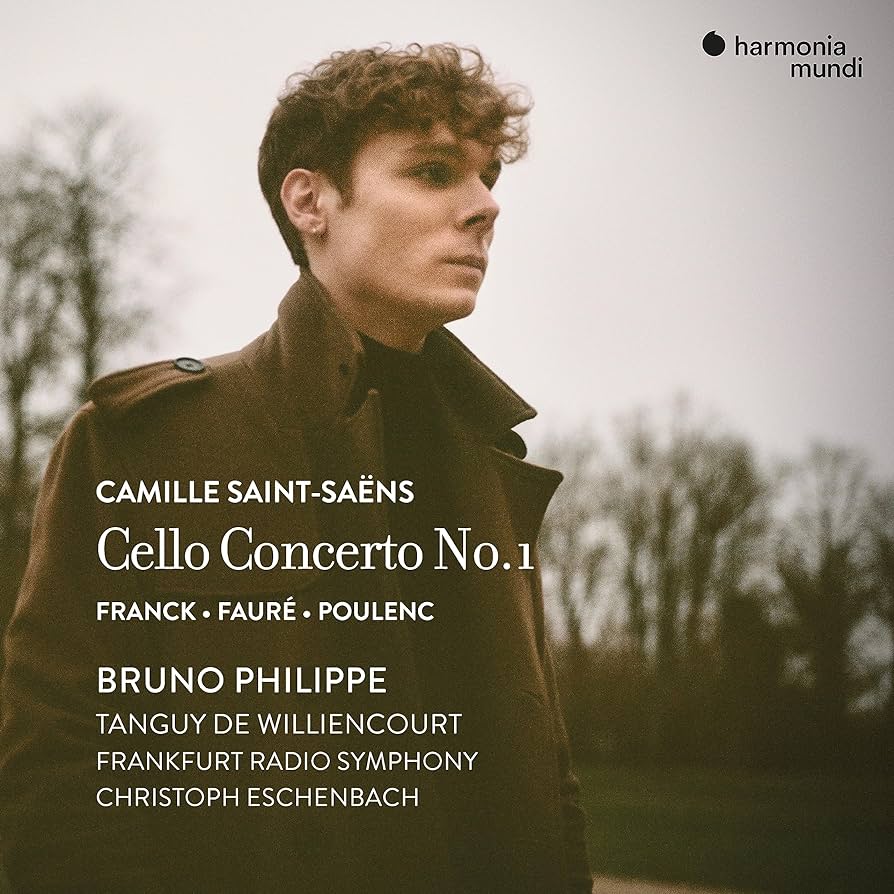CELLO CONCERTO NO.1
A Mixed Bag of French Delights
In their latest release on Harmonia Mundi, cellist Bruno Philippe and pianist Tanguy de Williencourt, accompanied by the HR Sinfonieorchester under the baton of Christoph Eschenbach, present a diverse program featuring works by Fauré, Franck, Poulenc, and Saint-Saëns. While the recording showcases Philippe’s undeniable technical prowess and sensitivity, certain interpretative choices and ensemble issues detract from an otherwise enjoyable listening experience.
The album opens with Fauré’s Romance Op. 69, where Philippe’s warm and expressive tone immediately captures the listener’s attention. His interpretation of Poulenc’s Cello Sonata is a highlight, demonstrating a nuanced understanding of the surrealist elements within the work. The collaboration between Philippe and de Williencourt is particularly noteworthy in navigating the shifts between lyrical suavity and demotic perkiness in this composition.
However, the recording has its share of less-than-ideal moments, notably in Fauré’s Papillon, where scratchiness pervades, though it is acknowledged that this may be an inherent challenge in the composition itself. The Franck Violin Sonata, transcribed for cello and piano by Jules Delsart, raises concerns about interpretative choices, specifically the use of rubato in the piano’s introductory bars. This departure from established tempo conventions seems unnecessary and detracts from the harmonic interest intended by the composer. Furthermore, the marked poco animato in the final moments of the Franck Sonata is criticized as excessive, diminishing the movement’s intended grandeur.
The Saint-Saëns Cello Concerto No. 1 is marred by issues of tempo consistency, particularly in the interpretation of the second theme, which should maintain the established tempo. Additionally, balance problems arise, with the first violins’ high triplets often being drowned out by the woodwind section.
Despite these shortcomings, there is no denying Philippe’s technical proficiency and the moments of brilliance scattered throughout the recording. The Poulenc Cello Sonata stands out as a particularly successful interpretation, showcasing the duo’s ability to navigate the intricate interplay between the cello and piano.
In conclusion, this album offers a mixed bag of French delights. While certain interpretative choices and ensemble issues may leave listeners wanting, Bruno Philippe’s undeniable talent and moments of interpretative brilliance make this recording a worthwhile addition to any classical music collection.

